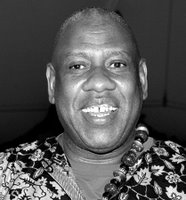

KikoRomeo website writes "...KikoRomeo is committed to the concept of community development through economic empowerment. We work exclusively with Kenyan artisans using predominantly Kenyan materials.
We are also committed to the discipline of fair trade.The KikoRomeo collections are crafted using predominantly Kenyan cotton, spun, woven or knitted by hand.
The loose weaves are hand woven in Kisumu, the hand and machine knits use Kenyan wools and cottons and are crafted by a Nairobi Women's Group. Our silks are spun from Kenyan grown cocoons, woven, printed and dyed in Kenya by ICIPE (International Centre for Insect Physiology and Ecology)
Our bags are woven from Kenyan Sisal by Machakos Women's Groups. Our beadwork is carried out by Maasai Women's Groups.
Our buttons, thongs and trims used, are made from Kenyan coconut, horn, bones and hides. We also work with Kenyan artists in the production of our fashion events.
Founded by Ann McCreath the principal apparel designer for KikoRomeo, combines classical training in haute couture from the University of Edinburgh and the ateliers of Rome and Milan, with a passion for the vibrancy and flamboyance of Africa.
Her collections combine the discipline of precision cut and tailoring, with the inspiration instilled by ethnic shape, colour and flow.
Ann has been in production in Kenya since 1997. She has two retail outlets in Nairobi and shows two major collections annually as well as exhibiting her garments extensively throughout Europe. She won second prize in the professional category of the Smirnoff Fashion Awards 1998 and was in the pannel of judges in the millennium awards.
KikoRomeo has a rapidly spreading reputation for the creation of unique and innovative wedding collections and show-stopping evening wear.
The KikoRomeo commitment to maximizing body potential has also created the flattering yet ultimately wearable concept of 'Radical Nairobi Chic'.KikoRomeo design off the peg, tailor-made and haute couture apparel for men, women and children.
KikoRomeo offers a complete range of 'must have' fashion accessories such as ; belts, hats, bags, bandanas and couture jewellery..."
Photos courtesy of KikoRomeo






